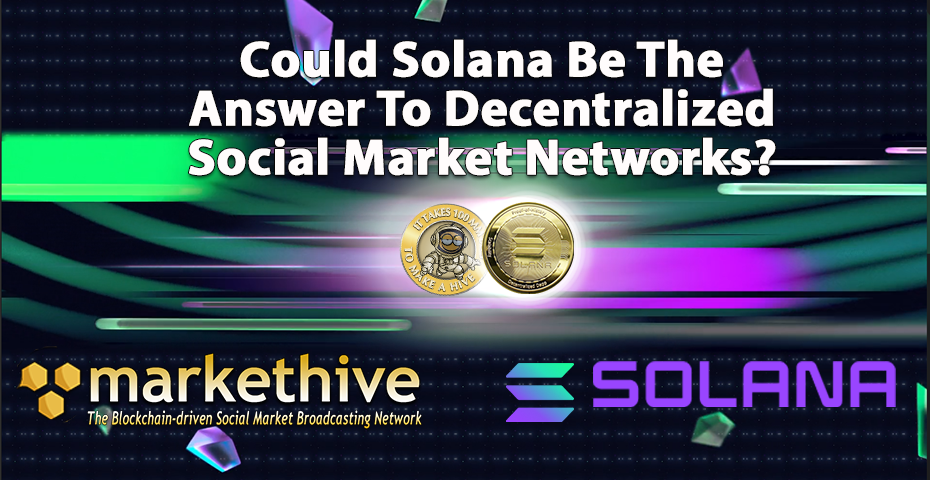


Image Source: Pixabay
Chainlink Debuts CCIP Across Multiple Mainnets $LINK
Chainlink has launched its Cross-Chain Interoperability Protocol (CCIP) for early adopters, with a full roll-out soon to follow. The protocol is designed to serve and facilitate cross-chain transactions across a number of blockchains currently operating from within and alongside the Ethereum and EVM ecosystems.
Notably, this innovative protocol is now live on several major blockchain platforms, namely Avalanche, Ethereum, Optimism, and Polygon.
The integration of this service has already stimulated the market, evidenced by the near 10% uptick in the price of Chainlink's native token, LINK, which soared to a high of $7.30 in the wake of the announcement.
Earlier this week, Chainlink's official blog post unveiled the CCIP's early access availability on multiple blockchain platforms. This development not only enhances the potential for interconnectivity among various blockchain ecosystems but also empowers developers by providing a robust platform to create custom cross-chain solutions. Read More
Litecoin Halving Is Fast Approaching
The crypto world eagerly awaits as Litecoin's third halving event approaches. Expected for August 2, 2023, this event will occur once the 2,520,000th block is mined.
A “halving” in the crypto context refers to the moment when the reward miners receive for validating transactions on the blockchain is cut by half. This means that miners will earn half the number of new coins for each block they mine, which, in the past, has significantly impacted the cryptocurrency's value.
The event has historically triggered significant movements in Litecoin's value, often preceding similar movements in Bitcoin. This has led some to speculate that Litecoin's performance could be a precursor to Bitcoin's future movements.
Litecoin's halving occurs approximately every 840,000 blocks, which takes around four years. Since its inception in 2011, Litecoin has already experienced two halvings. During these events, the rewards given to miners are reduced, which has led to an increase in Litecoin's value. Read More
What is a token maker, and how does it work?
A token maker or token generator tool is a type of software used to create cryptocurrency tokens.
Tokens represent various assets, including digital currencies, virtual goods, loyalty points and even real-world assets, such as real estate or artwork. Tokens may also be created to grant access to a decentralized application (DApp) or deploy token smart contracts.
So, what is a token maker? Technically, token makers take the tedious task of coding out of the mix — virtually allowing anyone to create their own token and launch a new cryptocurrency.
Not so long ago, cryptocurrency token development was a singularly complex task, and only advanced blockchain developers with strong blockchain programming skills could mint digital coins.
As the technology evolved, however, no-code tokenization platforms like TokenMint and CoinTool developed innovative platforms that equipped virtually anyone with an aptitude for cryptocurrencies to create their own tokens.
Depending on the platform, token generators can create fungible or nonfungible tokens (NFTs) in accordance with specific token standards (like ERC-20 and BRC-20). Aside from using automation to create and manage tokens, token creators also allow one to control certain parameters, such as token validity. Tokens may also be revoked if necessary. Read More
How blockchain takes the electronic music industry to a whole new level
Blockchain is making waves in the electronic music industry, bringing customer loyalty, engagement and industry collaboration.
Blockchain technology is often associated with the finance industry, namely, the usual suspects like traditional finance (TradFi) or decentralized finance (DeFi). However, the technology is industry-agonistic and can transform any sector that relies on data and interactions. One of the industries that could benefit from blockchain adoption is entertainment — specifically the electronic music market.
Challenges facing the electronic music industry:
The dance music market valued at around $10,2 billion in 2022, and boasting a dedicated fan base of hundreds of thousands of people, has long been lacking in terms of providing reciprocal benefits to its passionate supporters. Until now, there has been an absence of a cohesive global community that effectively communicates and derives advantages from the considerable contributions made by these fans to the scene.
Due to the highly fragmented nature of the electronic music industry, numerous clubs, festivals, artists and DJs operate independently and are spread around the globe. The lack of a unified platform and cohesive strategy for sustainable growth can hinder collaborative efforts. Read More

Because of Solana’s POH method, it can horizontally scale the rest of the blockchain, the same way that operating systems and databases scale their software. Each Solana team member has over a decade of experience working in operating systems GPU acceleration. Compilers, networks, etc., giving them extensive and deep experience optimizing software.
Solana is based on scaling software with hardware, with the vision of building the world's largest decentralized, single-chart blockchain. The only way to do that is by scaling all the core technologies with hardware.
Scaling the Blockchain in this way delivers a cheap cryptographic base for financial transfers and, more importantly, outside of finance. It is a way for Solana to build a better web experience for social media communities regarding micropayments.
Also, advertising-based revenues can be relinquished for social networks, leading communities to generate value by self-expression, creating their own content, and growing the network and the connections within the community, creating a better world for all. Read More
Spectrum Finance To Integrate With Cardano $SPF $ADA
Spectrum Finance, a distinguished name in the decentralized exchange (DEX) landscape, renowned for fostering trustless, cross-chain programmable messaging, has revealed its strategic collaboration with Cardano, the innovative smart contract platform.
The partnership is intended to extend Spectrum's capabilities into the Cardano ecosystem, enabling new opportunities for seamless blockchain interoperability.
Spectrum Finance has garnered recognition in the crypto industry by offering various functionalities tailored to user-specific needs, providing access to the Spectrum Network, a cross-chain smart contract platform for facilitating the creation of dApps that operate natively in a cross-chain environment.
Its standout feature is its ability to interact seamlessly with native currencies and tokens across different blockchains simultaneously. This negates the need for wrapped or synthetic assets when conducting transactions between blockchains, allowing actions such as swapping native ETH from the Ethereum mainnet to native ADA on the Cardano mainnet with ease. Read More
Solana Rolls Out Solang Compiler, Enhances Ethereum Compatibility
Solana Labs, the entity behind Solana, has announced the rollout of the Solang compiler. The new compiler will help Ethereum Virtual Machine (EVM) developers transition to the Solana ecosystem.
The move aligns with Solana’s efforts to become more accessible with Solidity, the programming language used with Ethereum smart contracts.
A New Compiler :
The launch of Solang will help developers who have worked with the Ethereum Virtual Machine (EVM) to transition into the Solana ecosystem smoothly. Solang gives developers who are familiar with Solidity, Ethereum’s primary smart contract programming language, all the tools required to write and create apps on the Solana network. The unveiling of the new compiler comes only a day after Neon EVM released a similar tool. In a statement published on its website, Solana Labs stated,
“Solana development is well known for using Rust or C for writing smart contracts, but Solana is evolving to become more accessible with Solidity, the primary programming language used for Ethereum smart contracts. Solana Labs is thrilled to announce that today you can now build on Solana with Solidity using Solang, a new compiler that helps bridge the gap between EVM developers and the Solana ecosystem.” Read More
Polygon 2.0 begins groundwork for decentralized governance
The expansion will encompass all blockchains and applications running on the Polygon network, democratizing the upgrade process and fostering community participation.
Polygon Labs has begun work on an expansion intended to include all blockchains and applications running on the Polygon network, and seeks to democratize the upgrade process and encourage community participation.
On July 19, the company’s developers presented a proposal to revamp the governance mechanism for the forthcoming Polygon 2.0 roadmap, with the aim of establishing several layer 2s on the network.
In line with the proposal, the developers introduced a comprehensive and innovative governance structure underpinned by “three main pillars,” each tailored to serve specific functions within the Polygon ecosystem.
The first pillar revolves around expanding the existing Polygon Improvement Proposal (PIP) framework, which enables users to propose and research upgrades for Polygon protocols. This expansion is set to encompass all blockchains and applications running on the Polygon network, democratizing the upgrade process and fostering community participation. Read More
Unleashing The Potential Of Web3: MetaBlox And Its User-Centric Network Revolution
Decentralized Identifiers (DIDs) possess immense potential to reshape the future landscape of the internet, ushering in a revolutionary approach to verifying our digital identities. The path to achieving this transformation remains ambiguous as we witness the emergence of Web3, a paradigm shift from platform-centric to user-centric networking. The crucial aspect of a user-centric network lies in users defining their identities and determining the information they wish to share with others.
After years of unwavering dedication, the MetaBlox team has released a breakthrough protocol that uses DIDs to provide a decentralized groundwork for creating a user-centric network. The team is diligently working to build the foundation for a web3 user-centric network that can support web3 native apps.
The MetaBlox Network mobile app represents a major step toward this lofty goal. With this software, users may take the first necessary step toward gaining access to a Free Privacy Protected WiFi Network by registering a DID and automatically uploading it to the blockchain and, in the process, earn mPoints that can be used on the further development of the network. Read More
Disclaimer: These articles are provided for informational purposes only. They are not offered or intended to be used as legal, tax, investment, financial, or any other advice.